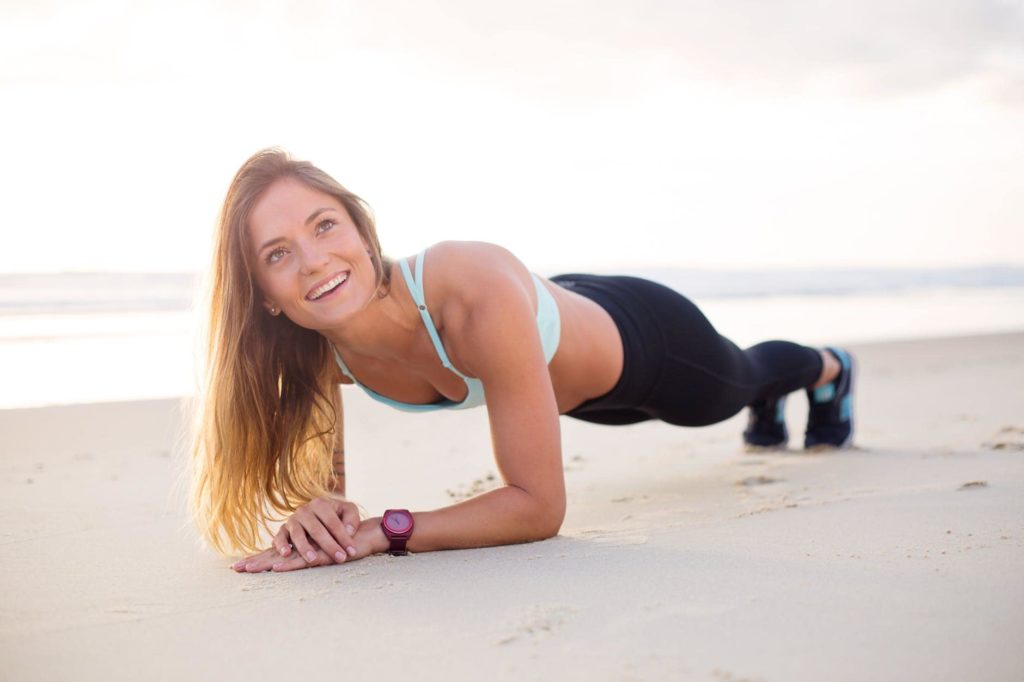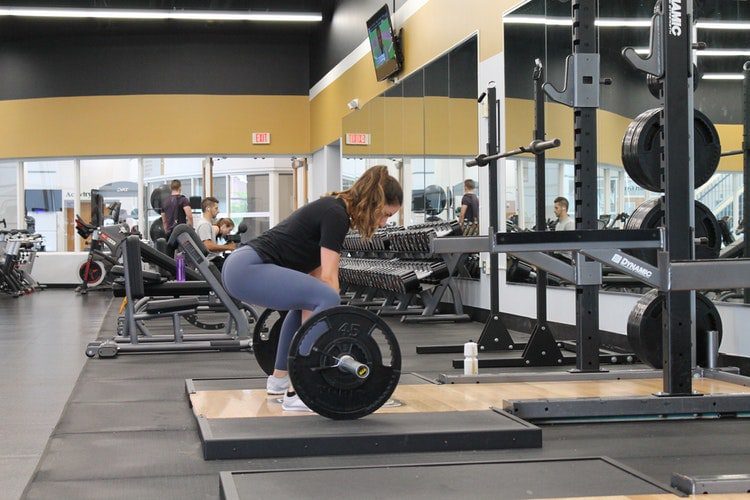Healthy minds and bodies are a stigma in society. The Homo Sapien is a direct function of survival and science would say “of the fittest”. In order for man and women to be ready for the height of survival and atop the game of their health they need to be secure with their bodies alignment and understand the cure of strength training and stretching. We can heal our minds, but not before we heal our bodies. Chiropractic health and yoga therapies are famous for alleviating pain in the; head, neck, shoulders, upper and lower back, legs, glutes. The way to feel about yoga is not hesitant about stretching but one should ask themselves, “How will I feel after stretching and relaxing? Will I feel that much better?”
A woman must be in tune with her natural defense in order to be successful in the modern world. There are traits ingrained in every woman that allow her to not to be accosted by the fear of her weaknesses, and illnesses, or bodily injuries, defects that can slow us down in life. Any issues that stem from the physicality of our daily lives, and can be addressed through therapy, should be addressed.
There are three strength moves a woman must perform regularly in order to stay atop her world conquering game. Three general moves, therapeutic exercises that can encourage pain relief over time and even tone up that figure. There are basic exercises such as Planking, Supine, Dead Lifts. Exercises that balances the upper and lower torsos via core strengthening. The core is central to how we control our posture, balance, our ability to stand straight and turn our heads. The core is central to movement. Without core strength life would be viewed as an exercise of lifelessness. The benefit to stretching and balancing the core this way includes but are not limited to:
- -Strengthening abdominal muscles, but also working all the core muscles, back, hips, glutes.
- -Reducing tension in muscles supporting the spine; tension in these muscles (spine) can worsen pain from any number of back pain conditions
- -improving range of motion and overall mobility
- -reducing risk of disability caused by back pain
1. FOREARM PLANK
-

Image credits: Photo by Nathan Cowley from Pexels
Starting facedown with your legs closed and extended straight behind you, prop yourself up on your toes and your elbows with your forearm flat against the floor. If it helps, you can clasp your hands together.
1. Focus on tightening your core muscles and keeping your body in a straight line from your head to your feet.
a. Your back must be kept straight as to work the core and hips. If you start sagging your back you will be putting too much emphasis on working another area of the body that is not a focal point of the exercise.
2. Hold this position for 60 seconds, or as long as you can. If you struggle to hold it for a minute at first, it’s ok to work your way up in 10-second increments.
3. If you struggle to do the plank at first, begin by placing your knees on the ground instead of your feet until you build up enough back strength to straighten your legs.
We tend to stress about upper body strength and stressing about this issue is a common issue. Upper body balance and strength is not to be discouraged against and is in fact is important for much of our daily activity. Think of how much of the upper half of your torso you are using. Think of how much those basic abilities would be missed if it weren’t for natural exercises put in place for function to be obtained. Where there are chronic needs that need to be met and for persistent issues, however, you might want to consult with a female chiropractor who can really help guide your body through a healthy recovery from injuries and improve your posture and physiological health. The remedies subjugated in this article are to encourage strengthening and mental and physical awareness.
2. 6-MONTH SUPINE
The supine exercises all involve starting on your back with your legs bent. From this position, you can consider the following;
- Starting on your back, you will pick up either the right leg or left leg and just simply repeat the exercise from left to right, and vice versa. Allowing your legs to fall gently to each side (leg fall out). Repeat this exercise from a lying down position with your legs stretched out before you.
a. when you raise your legs in this position a few things are happening, the lower back is adjusting to muscles in the core (abdomen) and the glutes (butt). While lifting your legs, you are working out these other areas and this is what strengthens your back and legs for better posture.
b. Be sure to be mindful of your breathing patterns while exercising. Keeping a mindful pace will allow you to have more oxygen circulate. Breathe in through your nose and out through your mouth. Try not to breathe any other way because you will not be allowing your lungs to have the most clean circulating air.
2. Raising your knees up with your legs parallel to the floor (double leg)
a. while still lying down you are bringing your knees towards your chest and focusing on breathing in a repetitive pattern that is ok with your pace. While doing this exercise, your body puts stress on your lungs and chest cavity, so be mindful of how you are breathing. This exercise encourages more core muscle building and allows the upper areas of your back to stretch out.
3. Keeping your feet flat on the floor and pushing your belly to the ceiling, allowing your glutes to lift off the floor with your arms flat (full hip extension) or,
4. The same position as above while adding the lift of one leg into the air (single hip extension).
Don’t be surprised if, after performing these exercises other areas of your body feel sore. That is normal. The soreness (good soreness) means you worked out your muscles to their full potential. And we are mindful and honest about how we feel during the process because we do not want to encourage injury.
A woman will feel extinguished naturally, as would any man who is out of shape. The idea is to increase a level of endurance from our mentality. We want to strengthen our upper bodies and our minds at the same time. When we exercise, we are not just going through a motion and calling it a good attempt. No, we are alleviating stress, increasing wellness throughout our bodies, and increasing endorphins (those feel-good chemicals in our brains that make us smile and laugh and help keep depression away). We are utilizing a basic chemical and need for survival at the point of engagement with our strengthening. Women should feel accepting of the downfall behind their weaknesses and allow their exercising, core strengthening, running, their push-ups to not make them feel indifferent but that by just participating in those simple exercises, they are achieving steps towards a sound mentality and physical balance. This is what we want. We want to bring balance into our lives, and addressing severe issues via chiropractic health or simple strengthening exercises will help many accomplish that.
Additionally, incorporating recovery strategies into your fitness routine is essential for overall well-being. Consider exploring modalities like Cold Therapy, which has been recognized for its potential benefits in aiding recovery. You can find more information about Cold Therapy and its applications in this insightful article on coldtherapy.us.
3. DEADLIFT
A deadlift is a similar movement to a hip hinge but with the use of a barbell or kettlebell. Start with a weight suggested by our chiropractor to ensure you aren’t overexerting yourself. With your legs shoulder width apart, use an overhand grip that is wide enough that your hands are just outside your legs. Your back should be flat from start to finish, and your shoulders should remain pulled back and facing down. Keeping the bar in contact with your legs, your hips and knees should move together to transfer the bar from the ground to the upper thigh. Slowly return to your start position, maintaining a straight back.
These muscle building exercises will stimulate muscle protein synthesis, will kickstart your metabolism, and will help your body to regulate your hormones. These foundation forming moves are the basis of a stronger, less fatigued body.
Form is Everything
It’s important to pay special attention to your form while working out. Although short and sweet, you can really hurt yourself without adequate form. Here are some examples of issues in form that can result in an injury:
- Hyperextending your knees or elbows.
- Sway back, which is the opposite of slouching. Here, your back is leaning too far back causing your spine to curve inwards which results in anterior pelvic
- Chin jutting, or pushing your chin forward when doing a strenuous movement can lead to neck pain or injury.
Cover Image credits




